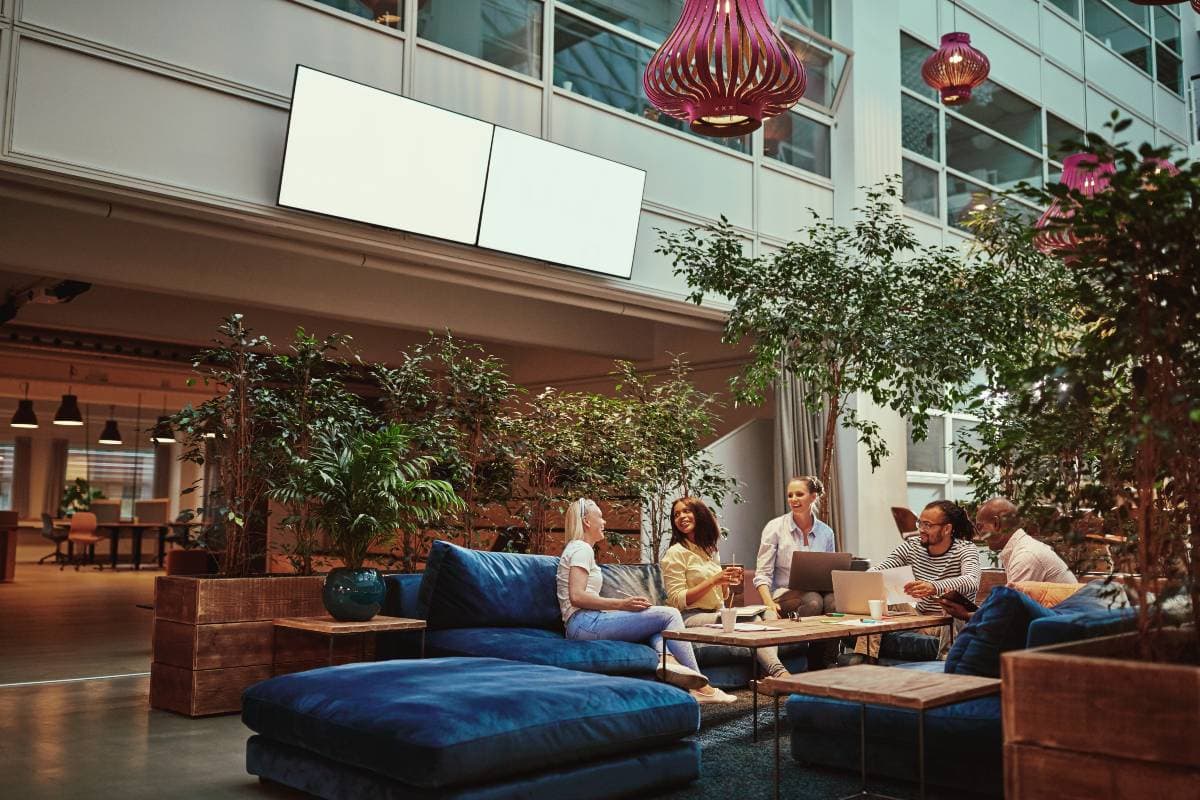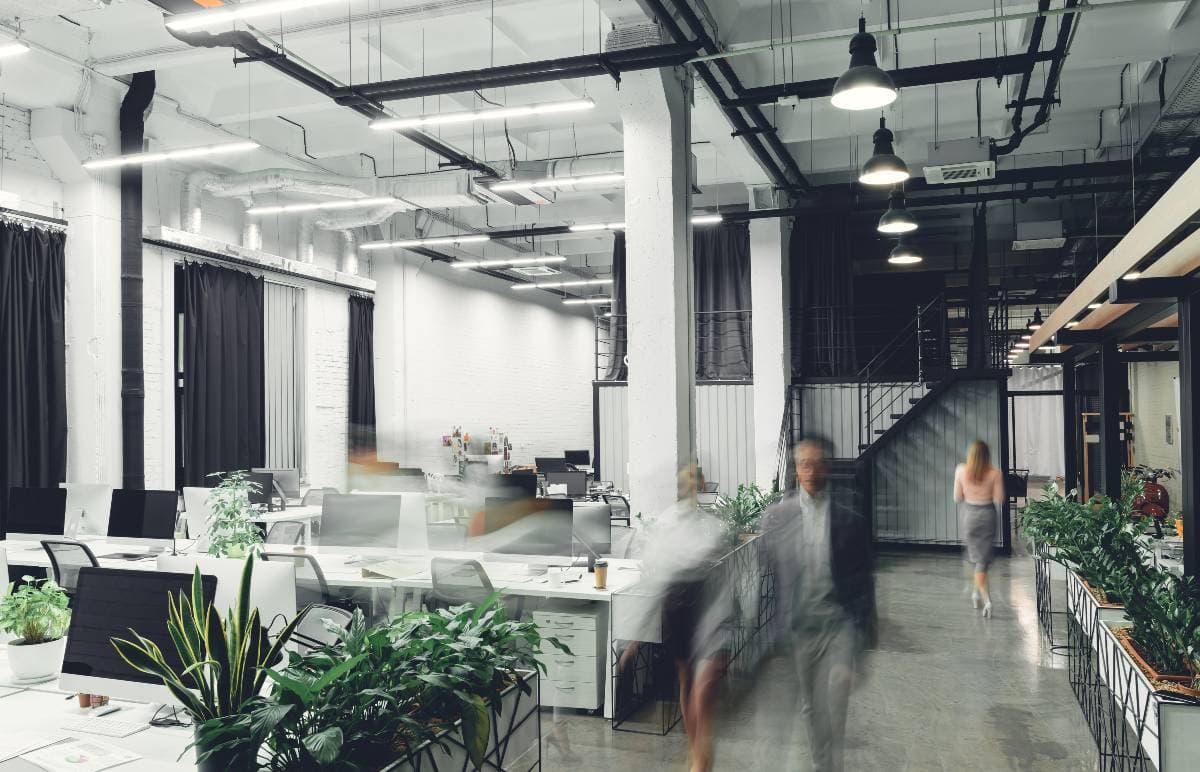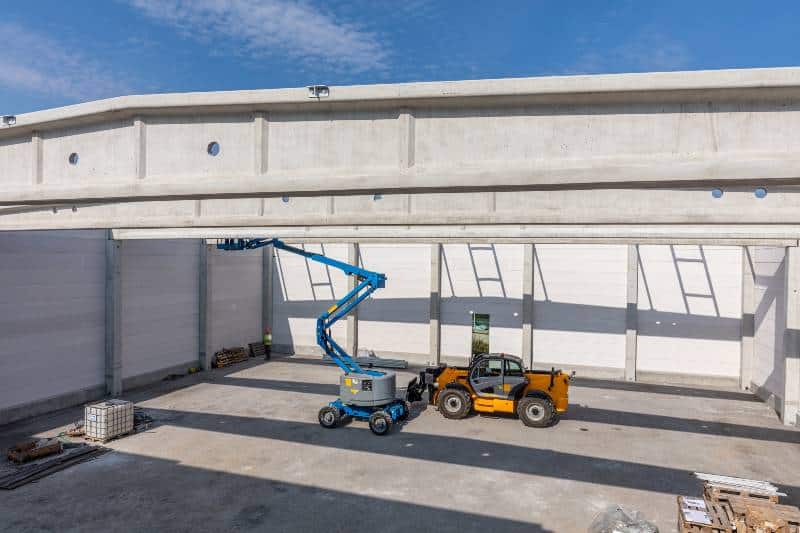Hey there, fellow commercial space enthusiasts! Mike Tolj here, and boy, do I have a treat for you today. We’re diving deep into the world of commercial space optimization, and trust me, it’s more exciting than it sounds!
In my 18 years of wheeling and dealing in commercial real estate, I’ve seen it all – from cramped cubicle farms to sprawling open offices that feel more like airports than workplaces. But here’s the kicker: the game is changing, and it’s changing fast.
Key Takeaways
- Strategic space planning and technology integration are crucial for optimizing commercial spaces
- Employee well-being and flexibility are key considerations in modern office design
- Cost-effective strategies and future-proofing measures ensure long-term success in space optimization
Understanding Space Utilization
Alright, let’s get down to brass tacks. The first step in optimizing your commercial space is understanding how it’s being used. It’s like detective work, but instead of solving crimes, we’re solving space puzzles!
Tracking and Analyzing Space Usage
Picture this: you’re a space detective, armed with IoT devices and a keen eye for detail. Your mission? To uncover the secrets of how your office space is really being used. Are those fancy meeting rooms actually being used, or are they just collecting dust? Is the break room the real hub of productivity? These are the questions we need to answer!
Key Metrics to Watch
Now, I know metrics can sound about as exciting as watching paint dry, but bear with me. These numbers are your secret weapon in the battle for space efficiency:
- Occupancy rates: How much of your space is actually being used?
- Vacancy rates: Where’s the wasted space hiding?
- Square footage allocation: Who’s hogging all the room?
The Power of Data-Driven Decisions
Here’s where it gets really juicy. With all this data at your fingertips, you’re not just guessing anymore. You’re making informed decisions that can transform your workspace. It’s like having a crystal ball, but for office design!
Remember, folks, knowledge is power. And in this case, it’s the power to create a more efficient, productive, and downright awesome commercial space.
Strategic Space Planning
Alright, space cadets, it’s time to put on our planning hats and get strategic! This is where the rubber meets the road in our quest for the ultimate optimized commercial space.
Efficient Layout Design
First things first, let’s talk layout. Imagine your office space as a game of Tetris. Your goal? To fit all the pieces together in the most efficient way possible. But instead of falling blocks, we’re dealing with desks, meeting rooms, and that all-important coffee station.
Here’s a pro tip: start with the essentials and work your way out. What are the non-negotiables in your space? Once you’ve got those locked in, you can get creative with the rest.
Flexible Workspaces and Modular Furniture
Now, let’s talk about flexibility. In today’s fast-paced business world, your office needs to be as adaptable as a chameleon. Modular furniture systems are your best friend here. Think desks that can be easily rearranged, chairs that can transform into impromptu meeting spaces, and walls that can move at will.
Activity-Based Workspaces
Here’s a concept that’ll blow your mind: what if your office was designed around activities rather than job titles? I’m talking about creating spaces specifically designed for:
- Focused work (hello, soundproof pods!)
- Collaboration (whiteboards and comfy seating, anyone?)
- Casual meetings (because sometimes the best ideas happen over coffee)
- Relaxation (yes, even offices need chill-out zones)
Vertical Space Utilization
Last but not least, let’s talk about going up! Vertical space utilization is the unsung hero of office design. Wall-mounted shelves, hanging plants, even elevated workstations – the sky’s the limit (literally)!
Remember, folks, strategic space planning isn’t just about making things fit. It’s about creating an environment that works for you and your team. So don’t be afraid to think outside the box – or even redesign the box entirely!
Technology Integration for Optimization
Hold onto your hats, folks, because we’re about to dive into the exciting world of tech-driven space optimization! Trust me, this is where things get really interesting.
Smart Building Systems and IoT Devices
Imagine an office that knows you better than you know yourself. That’s the power of smart building systems and IoT devices. We’re talking about:
- Lights that adjust based on natural light levels
- HVAC systems that optimize temperature for different zones
- Occupancy sensors that track how spaces are being used in real-time
It’s like having a personal assistant for your entire building!
Space Management Software and AI Planning
Now, let’s talk about the brains behind the operation. Space management software powered by AI is revolutionizing how we plan and use our commercial spaces. These smart systems can:
- Analyze usage patterns
- Suggest optimal layouts
- Even predict future space needs
It’s like having a crystal ball and a genius architect rolled into one!
Occupancy Analytics and Real-Time Monitoring
Here’s where it gets really cool. With occupancy analytics, you can see how your space is being used in real-time. It’s like having x-ray vision for your office!
- See which areas are underutilized
- Identify bottlenecks in foot traffic
- Understand peak usage times for different spaces
This data is gold for making informed decisions about your space.
Virtual Meeting Platforms and Desk Booking Systems
Last but not least, let’s talk about the tools that are making hybrid work a breeze. Virtual meeting platforms and desk booking systems are the dynamic duo of the modern office:
- Seamlessly blend in-office and remote work
- Optimize space usage by allowing flexible seating
- Reduce wasted space from empty assigned desks
Remember, integrating technology isn’t about replacing the human element – it’s about enhancing it. By leveraging these tools, you’re not just optimizing space, you’re creating a smarter, more efficient workplace for everyone. Now that’s what I call a win-win!
Maximizing Natural Light and Sustainability
Let’s shed some light on a bright idea – maximizing natural light and sustainability in your commercial space. Trust me, this isn’t just about saving the planet (although that’s a pretty awesome bonus). It’s about creating a space that’s better for your bottom line and your team’s well-being.
Optimizing Window Placement and Reflective Surfaces
First things first, let’s talk windows. Positioning workstations to maximize natural light isn’t just about cutting down on electricity bills (although that’s nice too). It’s about creating a space that feels open, energizing, and downright pleasant to work in.
Pro tip: Use reflective surfaces strategically to bounce light deeper into your space. It’s like having a bunch of mini-suns lighting up your office!
Incorporating Green Spaces and Biophilic Design
Now, let’s bring the outside in with some green spaces and biophilic design. This isn’t just about throwing a few plants around (although that’s a great start). We’re talking about:
- Living walls that purify the air and look amazing
- Water features that create a sense of calm
- Natural materials that bring warmth to the space
Studies show that biophilic design can boost productivity, reduce stress, and even decrease absenteeism. Not bad for a few plants, huh?
Energy-Efficient Lighting and HVAC Systems
Last but not least, let’s talk about the nuts and bolts of sustainability – energy-efficient systems. This includes:
- Smart lighting that adjusts based on occupancy and natural light levels
- HVAC systems that optimize temperature and air quality
- Renewable energy sources like solar panels
Remember, sustainability isn’t just good for the planet – it’s good for your wallet too. Lower energy bills mean more money to invest back into your business. Now that’s what I call a bright idea!
Collaborative and Multi-functional Areas
Let’s dive into the world of collaboration and multi-functionality. In today’s dynamic work environment, your office needs to be as flexible as a yoga instructor!
Designing Effective Meeting Rooms and Collaborative Zones
Gone are the days of stuffy boardrooms and siloed departments. Today’s collaborative zones are all about fostering creativity and teamwork. Here’s what to consider:
- Flexible furniture that can be easily rearranged
- Plenty of writable surfaces (whiteboards, glass walls, you name it!)
- Tech integration for seamless virtual collaboration
Remember, the best ideas often come from spontaneous interactions. Design your space to encourage these “happy accidents”!
Creating Multi-Purpose Spaces
Now, let’s talk about making your space work harder. Multi-functional areas are the Swiss Army knives of office design. Think:
- A cafeteria that doubles as an all-hands meeting space
- Phone booths that transform into focus pods
- Lounge areas that can host client meetings
The key is flexibility. The more hats a space can wear, the more value it brings to your office.
Balancing Open Office Concepts with Privacy Needs
I know, I know. Open offices have gotten a bad rap lately. But hear me out – it’s all about balance. The trick is to create an open office that still respects the need for privacy and focus. Consider:
- Acoustic treatments to manage noise levels
- Private areas for sensitive conversations or focused work
- Clear guidelines on how to use different spaces respectfully
Remember, the goal is to create a space that works for everyone, from your chattiest salesperson to your most introverted developer.
By creating collaborative and multi-functional areas, you’re not just optimizing your space – you’re creating an environment that adapts to your team’s changing needs. And in today’s fast-paced business world, adaptability is the name of the game!

Storage Solutions and Clutter Management
Alright, neat freaks and organization enthusiasts, this one’s for you! Let’s talk about taming the paper monster and keeping your office clutter-free. Trust me, a tidy office isn’t just pleasing to the eye – it’s a productivity powerhouse!
Innovative Storage Systems
First up, let’s explore some game-changing storage solutions:
- Modular shelving: Adjustable, customizable, and oh-so-stylish
- Compact mobile storage: Perfect for those items you need… but not every day
- Vertical storage: Because why spread out when you can go up?
Remember, the goal is to make the most of every square inch. Think of it as a fun puzzle – how can you fit everything in while still keeping it easily accessible?
Digitization of Documents and Cloud-Based Solutions
Now, let’s talk about slaying the paper dragon once and for all. Embracing cloud-based solutions and document digitization can:
- Free up physical storage space
- Make information more easily accessible
- Improve document security
Plus, think of all the trees you’ll save! Mother Nature will thank you.
Strategies for Maintaining a Clutter-Free Environment
Lastly, let’s talk about keeping that space spick and span. Here are some tried-and-true strategies:
- Implement a clean desk policy
- Regular decluttering sessions (make it fun with a team competition!)
- Designate specific areas for personal items
Remember, a clutter-free office isn’t just about looking good – it’s about creating a space where ideas can flow freely and productivity can soar. So roll up those sleeves and get organized!
Adapting to Hybrid Work Models
Alright, folks, it’s time to tackle the elephant in the room – hybrid work. Love it or hate it, it’s here to stay. So let’s talk about how to make your office space work in this brave new world of flexible working.
Hot-Desking and Office Hoteling Strategies
First up, let’s chat about hot-desking and office hoteling. These strategies can help you maximize your space in a hybrid world:
- Hot-desking: No assigned seats, first come, first served
- Office hoteling: Employees book desks or rooms in advance
Both approaches can help you reduce your real estate footprint while still providing space for in-office work. It’s like having your cake and eating it too!
Balancing In-Office and Remote Work Needs
Now, here’s the tricky part – how do you create a space that works for both in-office and remote workers? Consider:
- Creating dedicated areas for video calls (goodbye, noisy background!)
- Ensuring strong Wi-Fi coverage throughout the office
- Providing lockers or storage for employees who don’t come in every day
Remember, the goal is to make the office a place people want to come to, not have to come to.
Technology for Seamless Hybrid Collaboration
Last but not least, let’s talk tech. The right tools can make hybrid work feel, well, less hybrid:
- Virtual meeting platforms with high-quality audio and video
- Digital whiteboards for collaborative brainstorming
- Desk booking systems to manage office occupancy
The key is to create a seamless experience, whether someone’s in the office or working from their kitchen table.
Adapting to hybrid work isn’t just about surviving – it’s about thriving. By embracing these strategies, you’re not just optimizing your space – you’re creating a flexible, future-proof workplace that can roll with whatever punches the business world throws next.
Employee Well-being and Satisfaction
Let’s talk about the heart and soul of your office – your employees. After all, what good is a perfectly optimized space if your team isn’t happy and healthy in it?
Ergonomic Furniture and Adjustable Workstations
First things first, let’s talk about keeping your team comfortable. Ergonomic furniture isn’t just a fancy buzzword – it’s a game-changer for employee health and productivity. Consider:
- Adjustable chairs that support good posture
- Standing desks for those who want to stretch their legs
- Ergonomic keyboards and mice to prevent repetitive strain injuries
Remember, a comfortable employee is a productive employee!
Creating Spaces for Relaxation and Focus
Now, let’s talk about balance. Your office should have spaces for both high-energy collaboration and quiet concentration. Think about incorporating:
- Quiet zones for focused work
- Comfy lounges for casual meetings or quick breaks
- Meditation or nap rooms for recharging (yes, really!)
The key is to give your team options. Different tasks require different environments, and one size definitely doesn’t fit all.
Incorporating Employee Feedback in Space Planning
Last but definitely not least, let’s talk about the importance of listening to your team. After all, they’re the ones using the space day in and day out. Consider:
- Regular surveys to gauge satisfaction with the office layout
- Suggestion boxes (physical or digital) for ongoing feedback
- Involving employees in the design process for major changes
Remember, your employees are your best resource for understanding how your space is really working. Don’t be afraid to ask for their input!
By prioritizing employee well-being and satisfaction in your space planning, you’re not just creating a nicer office – you’re building a happier, more productive team. And at the end of the day, isn’t that what it’s all about?
Cost-Effective Optimization Strategies
Alright, budget-conscious bosses, this one’s for you! Let’s talk about how to optimize your commercial space without breaking the bank. Because let’s face it, not all of us have Google’s office renovation budget.
Low-Cost, High-Impact Changes
Let’s explore some changes that give you the most bang for your buck:
- Rearranging furniture for better flow (cost: free!)
- Adding plants for a quick refresh (cost: relatively cheap, and they pay for themselves in improved air quality)
- Updating lighting to LED bulbs (initial investment, but long-term savings)
Remember, sometimes the smallest changes can have the biggest impact!
Phased Implementation Approaches
Now, let’s talk strategy. Rome wasn’t built in a day, and your perfect office doesn’t have to be either. Consider a phased approach:
- Start with quick wins (like the low-cost changes we just discussed)
- Tackle one area at a time based on priority
- Spread major renovations over multiple budget cycles
This way, you can see improvements quickly while spreading out the cost over time.
ROI Analysis for Space Optimization Initiatives
Lastly, let’s talk numbers. Before you invest in any major changes, do your homework:
- Calculate potential savings (energy costs, rent for downsized space, etc.)
- Estimate productivity improvements
- Consider intangible benefits like improved employee satisfaction
Remember, the goal is to make sure every dollar spent on optimization pays for itself
Future-Proofing Commercial Spaces
In the fast-paced world of commercial real estate, staying ahead of the curve isn’t just smart – it’s essential. Let’s talk about how to future-proof your space.
Designing for Adaptability and Flexibility
First up, let’s discuss the importance of creating a space that can roll with the punches:
- Modular furniture systems that can be easily reconfigured
- Movable walls for quick layout changes
- Multi-purpose spaces that can adapt to different needs
Remember, the only constant in business is change. Your office should be ready for whatever comes next!
Anticipating Technological Advancements
Now, let’s talk tech. The office of tomorrow is going to be smarter than ever:
- Plan for increased power needs and data connectivity
- Consider incorporating IoT devices for smart space management
- Leave room for future tech we haven’t even dreamed of yet
The key is to create a flexible infrastructure that can adapt to new technologies as they emerge.
Preparing for Evolving Work Trends
Lastly, let’s consider the changing nature of work itself:
- Design with remote collaboration in mind
- Create spaces that support activity-based working
- Consider how AI and automation might change workspace needs
Remember, the goal isn’t to predict the future perfectly – it’s to create a space that can adapt to whatever the future holds.

Case Studies: Successful Space Optimization
Alright, story time! Let’s look at some real-world examples of space optimization done right. These case studies will show you that with a little creativity and a lot of planning, amazing transformations are possible.
Example 1: Tech Startup’s Collaborative Haven
A growing tech startup in San Francisco transformed their cramped office into a collaborative powerhouse:
- Replaced assigned desks with a hot-desking system
- Created multiple collaborative zones with writable walls
- Installed a space management system to track usage
Result: 30% more employees in the same space, with improved collaboration and employee satisfaction.
Example 2: Law Firm’s Flexible Future
A traditional law firm in New York embraced flexibility:
- Converted private offices to shared spaces
- Implemented a desk booking system for attorneys
- Created quiet zones for focused work
Result: Reduced real estate costs by 25% while improving work-life balance for attorneys.
Example 3: Manufacturing Company’s Vertical Victory
A manufacturing company in Chicago made the most of their vertical space:
- Installed mezzanine levels for additional office space
- Used vertical storage solutions in the warehouse
- Implemented a smart lighting system to illuminate high spaces efficiently
Result: Increased usable space by 40% without expanding their building footprint.
Lessons Learned and Best Practices
From these case studies, we can draw some valuable lessons:
- Embrace technology for better space management
- Don’t be afraid to challenge traditional office layouts
- Consider the unique needs of your industry and employees
- Always measure results to justify and improve your optimization efforts
Remember, every space is unique, but with creative thinking and strategic planning, remarkable transformations are possible!
Legal and Compliance Considerations
Alright, let’s put on our legal caps for a moment. I know, I know, it’s not the most exciting part of space optimization, but trust me, it’s crucial. Ignoring these considerations could land you in hot water faster than you can say “open office floor plans.”
Building Codes and Regulations
The rules of the game:
- Ensure your optimized space meets local building codes
- Consider fire safety regulations when planning layouts
- Don’t forget about ventilation and air quality standards
Remember, these regulations aren’t just red tape – they’re there to keep your employees safe and healthy.
ADA Compliance in Space Optimization
The Americans with Disabilities Act (ADA) isn’t just a nice-to-have, it’s a must-have:
- Ensure all areas are accessible to individuals with disabilities
- Consider things like door width, ramp inclines, and workspace height
- Don’t forget about accessibility in your collaborative zones and common areas
Creating an inclusive workspace isn’t just the right thing to do – it’s the law.
Privacy and Data Protection in Smart Buildings
Lastly, let’s talk about the elephant in the room – privacy in our increasingly smart offices:
- Ensure your occupancy analytics systems protect individual privacy
- Be transparent with employees about what data is being collected and why
- Make sure your smart building systems are secure from cyber threats
With great technology comes great responsibility. Make sure you’re using your smart office-building powers for good!
FAQs
How much does it typically cost to optimize commercial space?
How long does a typical space optimization project take?
Can space optimization really improve employee productivity?
How do I balance open collaborative spaces with the need for privacy?
How can I ensure my space optimization efforts are successful?
Conclusion
Optimizing your commercial space is more than just efficient layouts—it’s about creating an environment where your business and employees thrive. By understanding usage patterns, embracing flexibility, leveraging technology, prioritizing well-being, and anticipating future trends, you can transform your workspace into a powerful asset.
Ready to unlock the full potential of your commercial space? Don’t let outdated designs hold you back. Take the first step towards a more efficient, productive, and inspiring workplace. Contact me for a personalized consultation. Together, we’ll craft a space optimization strategy that aligns with your unique needs and goals. Your ideal workspace is just a conversation away—let’s make it a reality!




